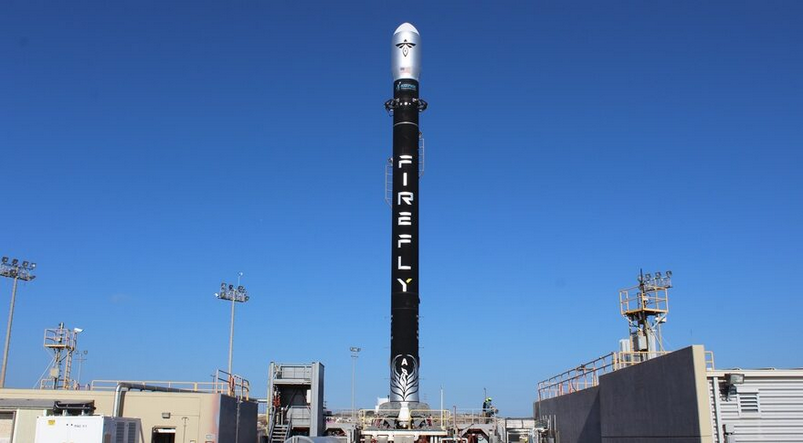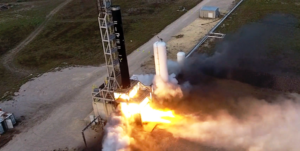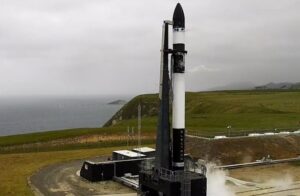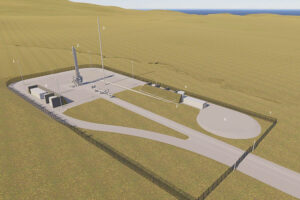Firefly Alpha rocket reaches orbit on 2nd attempt
3rd Oct 2022
Texas-based Firefly Aerospace has successfully test-launched its Alpha rocket into space. The Alpha delivered multiple satellites into Low Earth Orbit (LEO) on 1st October. The milestone marks Firefly as the first US company to reach orbit in its second attempt. The company’s first attempt in September 2021 failed when one of four of its Reaver engines prematurely shut down.
Alpha is the first demonstration rocket built by Firefly and can deploy 1,170 kilograms of satellites into LEO for rideshare customers. It is a two-stage rocket propelled by highly refined kerosene and liquid oxygen as fuel and oxidizer respectively. The launch vehicle is made from carbon-fiber composites – which makes it lighter compared to metal – and is known as one of the biggest small-satellite rockets. According to the company, each launch costs US$15 million.
The Firefly Alpha launch
The demonstration mission, dubbed ‘FLTA002 To The Black,’ saw the 29 meter tall (95 feet) rocket lift off from the Vanderberg Space Force Base at 12:01 am local California time.
According to Everyday Astronaut, who worked with Firefly to livestream the event, first stage burn ended just under two minutes after launch, followed closely by main engine cut-off (MECO). The two stages separated around 2.5 minutes after the blast-off and the upper stage completed a circularization burn with its single lighting engine almost an hour after launch which led it to its target destination, 300 kilometers above Earth. The company calls the burn the “most technically challenging” aspect of the mission.
Onboard the rocket were two CubeSats and five PicoSats for multiple companies. Most of the satellites are newer versions of the ones that were lost during the first attempt last year, including payloads for NASA’s demonstration satellite mission, TechEdSat-15, Teachers in Space, and Libre Space Foundation.
The commentator on the Everyday Astronaut livestream, Tim Dodd, said 90 minutes after launch: “We now have good confirmation of every major milestone that a rocket company could ask for. I mean, that is huge… I’m blown away, guys… The scale of this rocket to be able to do something like this on their second launch attempt is monumental.”
Firefly said in a tweet that the private company had 100 percent mission success, and each customer confirmed the successful acquisition of signal with their payloads shortly after deployment.
In a statement published on 3rd October, Firefly CEO Bill Weber said: “With the success of this flight, Firefly has announced to the world there is a new orbital launch vehicle, available today, with a capacity that is pivotal to our commercial and government customers.
“Proving our flight and deployment capabilities on only our second attempt is a testament to the maturity of our technology and the expertise of our team. This is an exciting day at Firefly, and we have many, many more ahead. I could not be more excited for the Firefly team.”
Previous launch mishap
The success of this latest launch is a huge achievement for Firefly. For a second attempt to go this smoothly is extraordinary in the space industry. Even the first test in September last year, though it ultimately failed, was considered more successful than SpaceX’s maiden launch which exploded before lifting off the ground.
The first launch occurred on 2nd September 2021, after being announced in mid-August. However, that date had already been a push back of a year due to an essential component not being delivered to Firefly in time.
As explained in a series of tweets on launch day last year, Firefly said that the vehicle released and cleared the pad correctly, and even had a perfect lift-off. However, about 15 seconds into the flight, engine number two shut down. Firefly described it as an “uneventful shutdown” because while it didn’t fail, the propellant valves on the engine closed and “thrust terminated from engine 2”.
The Federal Aviation Administration (FAA) was then tasked to investigate the matter, which was expected to take several months. However, it took an entire year to set another launch date after being plagued by several more delays.
Recent delays
Rocket launch delays are not uncommon, especially for new vehicles. Firefly was initially set to launch Alpha again on 11th September 2022, but the company saw a drop in helium pressure in the lead-up, and then experienced bad weather forecasts, therefore deciding to delay the attempt.
Then Firefly planned to perform the orbital test on 30th September, after successful engine ignition. However, as the Reaver engines lit up, they unexpectedly shut down straight away. Firefly tweeted shortly after:
“The vehicle went into auto abort after ignition. This is designed into the system to ensure safety. The team scrubbed tonight’s launch attempt and is reviewing data to determine our next launch window”.
But now that the company has its first successful launch behind them, Firefly is completing the Acceptance Testing Protocol (ATP) for its Alpha 3 vehicle for its upcoming NASA VCLS Demo 2-FB ELaNa 43 launch, which was first announced in 2020. The mission will see two CubeSat constellations blast off into a 550-kilometer Sun Synchronous Orbit. By 2024, Firefly is hoping to complete 12 Alpha launches per year.







Thank you for your comment! It will be visible on the site after moderation.